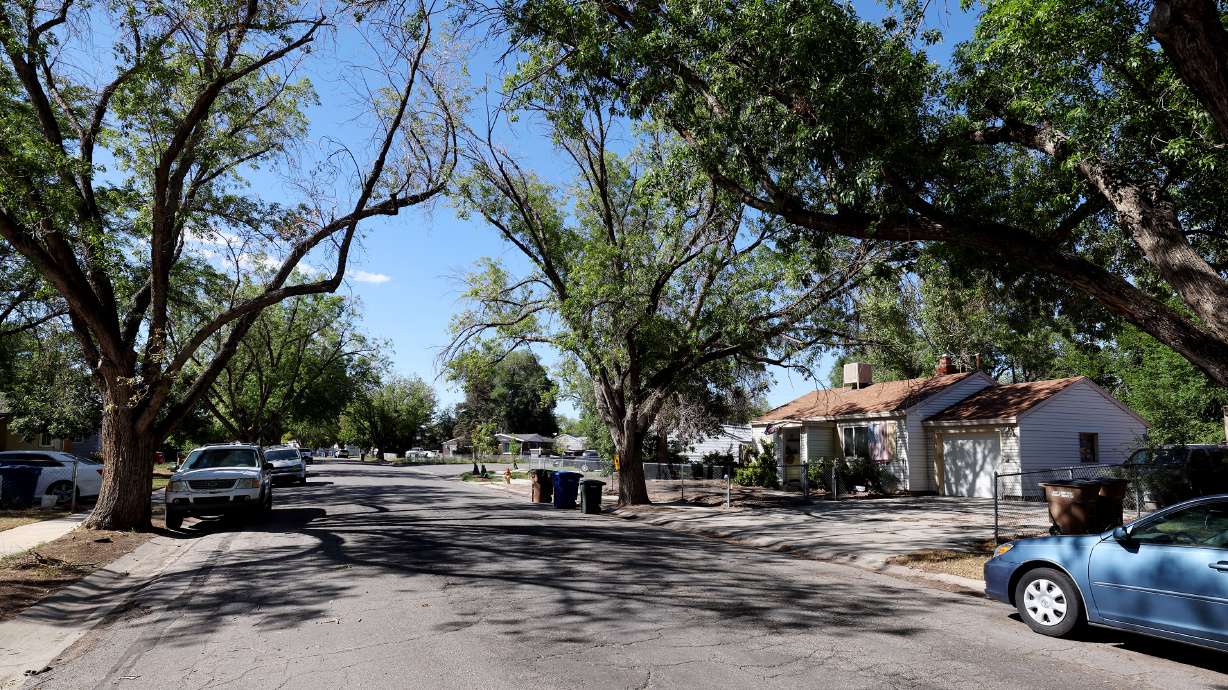Estimated read time: 5-6 minutes
This archived news story is available only for your personal, non-commercial use. Information in the story may be outdated or superseded by additional information. Reading or replaying the story in its archived form does not constitute a republication of the story.
SALT LAKE CITY — Housing displacement isn't unique to Salt Lake City — or Utah for that matter — but it's growing with intensity, says Angela Price, policy director for Salt Lake City's Community and Neighborhoods Division.
"There are no more affordable tracts, not just in Salt Lake City, but cities throughout the entire region," she told the Salt Lake City Council on Tuesday, as she rehashed data collected from the initial phases of a major anti-gentrification project the city has worked on for the past two years. "We only have two tracts where people can go to if they're displaced in Utah."
The final phase of the project, known as "Thriving in Place," aims to quell the problem by offering nearly two dozen recommendations that can slowly reverse the trend.
Salt Lake City leaders are slated to vote on whether to adopt the measure next month, as it seeks to tackle concerns tied to the city's current housing crunch and projected growth. The city is also hosting multiple meetings to collect final feedback on the plan.
"This is a community-driven plan to understand displacement and develop a plan of action," Price said, speaking to the council. "(It) is a roadmap that will serve as a foundation for you as you're making policy decisions around housing in the coming years."
Tackling housing displacement
Salt Lake City's "Thriving in Place" plan began in 2021 after funding the previous year. Its first phase captured data and public sentiment to underscore the impact of housing displacement on residents.
While data showed the city's displacement is highest in areas east of the Granary District and south of Central Ninth and Ballpark neighborhoods in the city, even the "more affordable" parts of the city are experiencing displacement, Price said. She added it's becoming a statewide and regional issue, as evidenced by the lack of affordable tracts.
The report, released last year, also found displacement is a high concern among residents; there aren't enough housing units overall and nearly half of all renters in the city are rent-burdened. While displacement was a concern citywide, the report also found the problem disproportionately affects households of color and reflects historic discrimination and segregation patterns in city housing.
The second phase, which is what the city will vote on, provides a "roadmap" for solutions to these issues. It lists six goals of the project, from protecting tenants from replacement, to advocating for residents at a statewide level, and recommends 22 policies that Price said can potentially help increase housing stock and prevent low-income residents from being priced out of their homes.
Some of these are:
- Developing a tenant relocation assistance program, helping tenants find ways to become homeowners and promoting affordable living and better jobs.
- Developing and adopting a community benefits policy, acquiring and rehabilitating unsubsidized housing and addressing the impact of short-term rentals on housing in the city.
- Adopting an affordable housing incentives policy, finding ways to make accessory dwelling units easier and cheaper to build and utilize publicly owned property.
- Develop new funding sources and leverage existing resources to expand capacity for tenant support and housing affordability.
- Work to advance tenant rights and affordable housing at the state level.
However, Price said the plan likely won't make an immediate impact, given the time it takes to reverse the impacts of old housing policies and the housing supply shortage. She adds there are also several forces the city can't control, including the direction of the economy, minimum wage caps and child care costs.
"Displacement is happening now and many of the fixes are going to take years for us to achieve," she said. "There are no magic fixes and our success is going to be incremental."
Almost every city department worked on the place, along with consultants and a community working group with more than 30 representatives, Price said. The University of Utah's Department of City and Metropolitan Planning and the Urban Displacement Project were among those who assisted.
Salt Lake City's planning commission voted unanimously in favor of forwarding the plan with a positive recommendation in July. Members of the Salt Lake City Council said they hope to take a proactive approach to the problem rather than wait until someone is evicted from their home, while expressing a desire to ensure the city is working with partners to mitigate costs.
But they appeared generally supportive of what is proposed.
"I believe this is an all-hands-on-deck problem," said Salt Lake City Council Chairman Darin Mano, as he expressed his appreciation for the plan. "I'm sure this is not the full list of things that we have to do, but it seems like a good broad list of things, of places to start. This is a big task and we don't have a lot of time to wait. ... We're already behind."
Growing community input
The Salt Lake City Council is scheduled to hold a public hearing on the plan during its Oct. 3 meeting before it is tentatively scheduled to vote on whether to approve the document on Oct. 17.
Meanwhile, the ramifications of the plan are already under consideration. Salt Lake City planners are hosting three open house meetings over the next few weeks to explain new draft zoning amendments proposed in response to the Thriving in Place study.
Those are
- 5:30-7:30 p.m. on Sept. 19: Sugar House Fire Station No. 3 (2425 S. 900 East)
- 5-7 p.m. on Sept. 28: Sorenson Unity Center, Black Box Theater (1383 S. 900 West)
- 6-7:30 p.m. on Oct. 4: Salt Lake City Public Library Main Branch, Conference Room B (210 E. 400 South)









